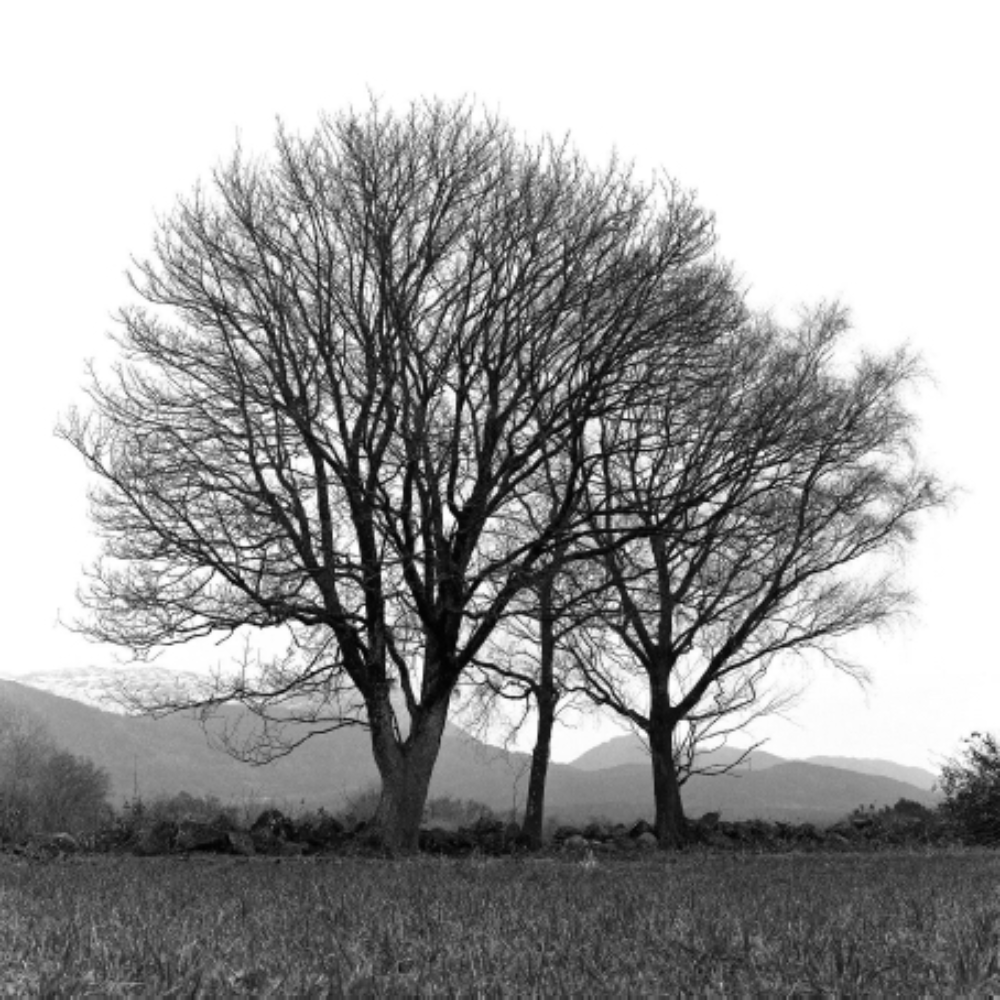Platanlønn, Acer pseudoplatanus, 1948-2023
59.862785°N 5.562311°Ø
DOI:
https://doi.org/10.7577/ar.5493Keywords:
Artistic research, art didactics, woodwork, craft, analogue photo, photo emulsion, arts and crafts, deep ecologyAbstract
This essay is part of an artistic research project, in which I have used my experiences from felling trees, wood and metal work, outdoor life, and analogue photography to explore the following problem: How can a deep ecological perspective on one's own creative practice of photographing, felling, and processing a tree help to understand the sense of melancholy that accompanies this work? The creative work has consisted of photographing, felling, and processing a large sycamore, a blacklisted tree In Norway, to which the title refers. I developed one of the photographs on a large board that I cut out of the thickest part of the trunk. This board was exhibited together with a bronze plaque I cast which reads Sycamore, Acer pseudoplatanus, 1948-2023, 59.862785°N 5.562311°E, surrounded by photographs of the sycamore's own seeds and trees growing close to it. Five short texts representing different approaches to the problem were presented together with the pictures, and it is these texts that have been expanded into this essay. The project is inspired by artistic expressions in literature and visual arts that thematize environmental destruction and man's relationship with nature. Together with Roland Barthes' thoughts on the photograph as a sign and Arne Næss's relational understanding of the self, these have challenged me as an art teacher to rethink my own practice as a teacher and craftsman.
References
Barthes, R. (2001). Det lyse rommet – tanker om fotografiet. Pax Forlag.
Borgdorff, H. (2006). The debate on Research in the Arts. KHiB.
Deleuze, G. & Guattari, F. (1988). A thousand Plateaus – Capitalism and Schizophrenia. Bloomsbury Academic.
IPBES (2023). Summary for Policymakers of the Thematic Assessment Report on Invasive Alien Species and their Control of the Intergovernmental Science-Policy Platform on Biodiversity and Ecosystem Services. IPBS Secretariat https://doi.org/10.5281/zenodo.7430692
IPBES (2019). Global assessment report on biodiversity and ecosystem services of the Intergovernmental Science-Policy Platform on Biodiversity and Ecosystem Services. IPBS Secretariat. https://doi.org/10.5281/zenodo.3553579
Jakobsen, T.G (2005). Økofilosofi – økologi, evolusjonsteori og transformativ læring. Tapir akademisk forlag.
Kant, I. (2005). Kritikk av den rene fornuft. Pax Forlag.
Lerin, S. T. & Hystad, B. H. (u.å.). Electronic Flora. Hentet 17. oktober fra http://www.lerinhystad.com/?fbclid=IwAR0Q1_p11VafRn3gPoK0h9KigpBRsawlrTC6FKjJQy0JI 2vD85qAY0T-AMU#/electronic-flora-1/
Lunde, M. (2015-2022). Klimakvartetten: Bienes Historie. Blå. Przewalkis hest. Drømmen om et tre. Ascehoug
Taiz, L. Alkon, D. Draguhn, A. Murphy, A. Blatt, M. Hawes, C. Thiel, G. Robinson, D. G. (2019). Plants Neither Possess nor Require Consciousness, Trends in Plant Science, 24(8), 677-687 https://doi.org/10.1016/j.tplants.2019.05.008
Mallatt, J., Blatt, M.R., Draguhn, A. et al. (2017) Debunking a myth: plant consciousness. Protoplasma 258, 459–476. https://doi.org/10.1007/s00709-020-01579-w
Morton, T. (2013). Hyperobjects: Philosophy and Ecology after the End of the World. University of Minnesota Press.
Nussbaum, M. (2023). Justice for animals – Our collective responsibility. Simon Schuster forlag.
Næss, A (1989). Ecology, community and lifestyle. Cambridge University Press.
Tokarczuk, O. (2020). Før plogen din over de dødes knokler. Gyldendal.
Østern, T. P. (2017). «Å forske med kunsten som metodologisk praksis med aesthesis som mandat.» Journal for Research in Arts and Sports Education, Special Issue: «Å forske med kunsten» 1(5), 7–27. http://dx.doi.org/10.23865/jased.v1.982

Downloads
Published
How to Cite
Issue
Section
License
Copyright (c) 2023 Kjetil Sømoe

This work is licensed under a Creative Commons Attribution 4.0 International License.
Authors who publish with this journal agree to the following terms:
- Authors retain copyright and grant the journal right of first publication with the work simultaneously licensed under a Creative Commons Attribution License that allows others to share the work with an acknowledgement of the work's authorship and initial publication in this journal.
- Authors are able to enter into separate, additional contractual arrangements for the non-exclusive distribution of the journal's published version of the work (e.g., post it to an institutional repository or publish it in a book), with an acknowledgement of its initial publication in this journal.
- Authors are permitted and encouraged to post their work online (e.g., in institutional repositories or on their website) prior to and during the submission process, as it can lead to productive exchanges, as well as earlier and greater citation of published work (See The Effect of Open Access).